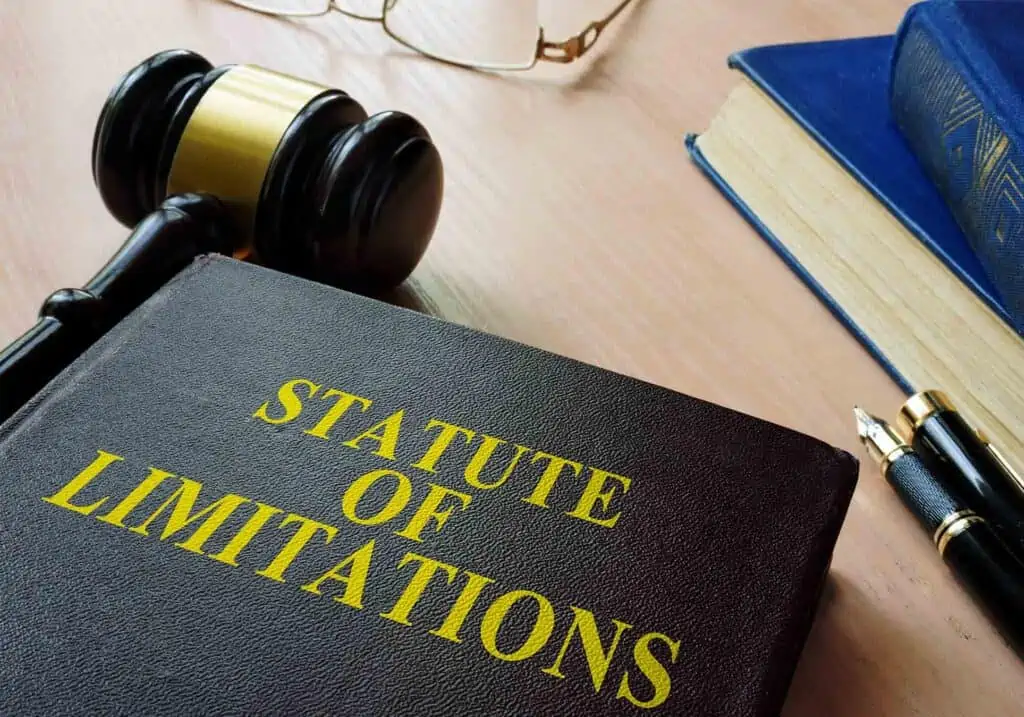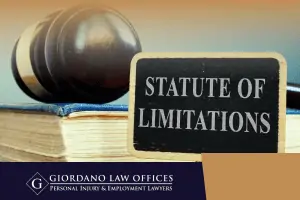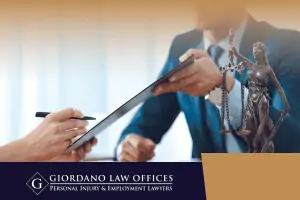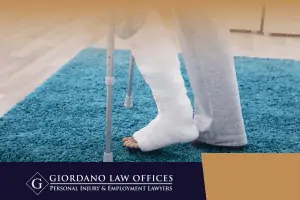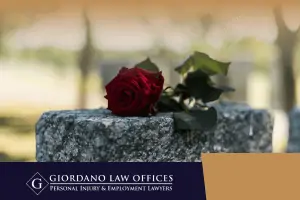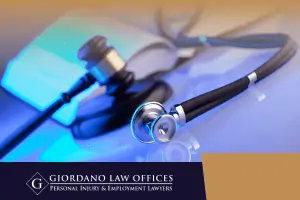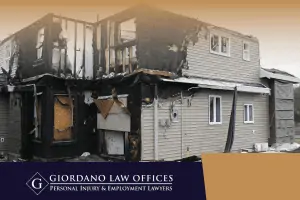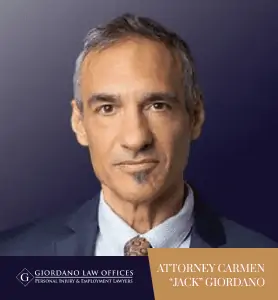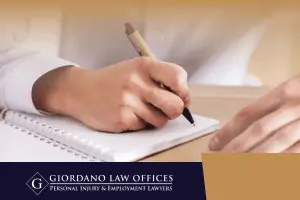
That is why you should know the statute of limitations in New York for personal injury claims. It’s essential to be informed when the statute of limitations on a claim starts to run so that you can take the appropriate action before the time limit runs out.
In this blog, we will go over the statute of limitations for New York personal injury cases, what happens if you miss it, what are its exceptions, how it can be extended, and others.
Statute Of Limitations Definition
The New York legislature passed the statute of limitations law to set the maximum time after an accident within which legal proceedings may be started. A statute of limitations affects the time to file a claim. This time limit usually starts to run on the date of the incident for which you are seeking compensation for your damages. This time limit applies to nearly all forms of personal injury cases. This includes negligence and intentional offenses.
The core purposes and benefits of statutes of limitations are to guarantee that defendants are treated and that cases are founded on lawful, timely evidence. Physical evidence and the dependability of witness testimonies weaken over time. As a result, limiting how long a plaintiff may wait before filing a lawsuit is critical to ensuring that the trial is fair.
NY Statute Of Limitations For Personal Injury Cases
Most personal injury claims in New York must be filed within three years of the date of the injury. If you do not file within this time frame, you will lose your right to pursue a personal injury lawsuit.
Here are three factors you should be aware of when it comes to New York’s personal injury statute of limitations:
- A statute of limitation is a piece of legislation that defines the maximum amount of time that the parties have to start a legal process.
- The period permitted for filing varies depending on the kind of offense and its severity.
- Grave crimes, such as murder, do not have a statute of limitations.
To employ the statute of limitations as a defense, the defendant must demonstrate that the criminal complaint or charge was submitted after the particular term stipulated by the legislation has gone.
What Are The Exceptions To NY Personal Injury Statute Of Limitations?
New York has noted various conditions that might postpone the running of the statute of limitations “clock” or halt the clock after it has begun to run, thus prolonging the three-year filing deadline. Here are some instances of conditions that are likely to alter the normal timeline:
The Injured Person Is a Minor or Under Legal Disability
If the injured victim is under a legal disability at the time of the underlying accident — they are a minor under the age of 18 or are of unsound mind — the tree-year “clock” for filing the personal injury lawsuit will most likely not begin to run until the legal disability is “lifted.” This means the victim turns 18 or is declared mentally stable.
The Clock Only Starts Until the Injured Person Discovers the Injury
The discovery rule states that the term does not begin to run until the victim finds or reasonably should know that the negligent activity caused the damage in certain circumstances, such as exposure to dangerous chemicals or medical malpractice.
Statute of Limitations for Personal Injury Case Is Shorter When Suing a Municipality
When suing the state or municipal government, there are tight time limits for filing your personal injury claim. Some jurisdictions require you to submit a claim within 30 days of your injuries. Other states require you to file a claim within 60, 90, or 120 days after your injuries.
Many states have one time limit for claims against a city, town, county, or municipality and another for claims against the state or a state agency.
But, not all states have a government-specific time restriction. You may need to be familiar with the general statute of limitation for your injury. Contact a NY personal injury lawyer for help.
NY Statute Of Limitations Depends Upon The Type Of Case
Aside from New York’s statute of limitations for personal injuries, each type of case has its statute of limitations judging when the case is too old to be tried. Here are a few examples of the most common:
Wrongful Deaths
In the days after a wrongful death in New York, you may discover that you do not have enough money to cover the funeral or burial expenditures. You’ll be concerned about how you’ll pay your expenses if you rely on your loved one for support.
The following damages may be recovered in a wrongful death claim. You have the right to seek restitution for the financial damages you incurred due to the death of a loved one. Money for pecuniary damages may include:
- Income and wage loss
- Loss of employment benefits
- Loss of inheritance
The New York statute of limitations for wrongful deaths is two years.
Medical, Dental, Podiatric Malpractice
Section 214-A of the New York Civil Practice Law & Rules governs the statute of limitations for medical malpractice in New York, specifically medical, dental, or podiatric misconduct. According to Section 214-A, the New York state medical malpractice statute of limitations is normally two years and six months from the date of the last negligent conduct or the date of the last treatment. However, for governmental hospitals, federal, state, county and municipal (including New York City), the statutes of limitations are even shorter. A notice of claim or intention to sue often has to be filed within 90 days of the incident. Therefore, it is imperative that you seek legal representation for medical malpractice quickly.
Contact With or Exposure to Phenoxy Herbicides
For injury lawsuits involving herbicide exposure, the statute of limitations is two years from the date of discovery of the damage or from the date such harm should have been found, whichever is later. The personal injury statute of limitations is specified in Section 214-B of the New York Civil Practice Law & Rules.
Injuries induced by contact with or exposure to phenoxy herbicides are the subject of this action. Regardless of any other provision of law to the contrary, an action to recover damages for personal injury sustained as a result of contact with or exposure to phenoxy herbicides while serving as a member of the United States armed forces in Indo-China from January 1, 1962 to May 7, 1975 may be brought within two years of the date of discovery of the injury, or within two years from the date when through the exercise of reasonable diligence the cause of such injury should have been discovered, whichever is later.
Property Damage or Property Liability
The clock begins running for any property damage to your home or company when the damage occurs. The owner has three years from that date to initiate a claim against the person liable for the damage.
Your property damage case has a three-year deadline, but you should speak with an expert New York personal injury lawyer to learn about your choices and safeguard your rights if that deadline is approaching. Again, if a governmental entity is involved, the statutes of limitations are even shorter. A notice of claim or intention to sue often has to be filed within 90 days of the incident. Therefore, it is imperative that you seek legal representation for medical malpractice quickly.
What If You Miss The NY Statute Of Limitations?
Suppose more than three years (or a lesser time if a governmental entity is involved) have elapsed since the actual car accident, but you still attempt to file a personal injury case, what happens? In other words, what happens if you miss the statute of limitations because you wait too long to contact an attorney and find a lawyer to start the lawsuit. In that case, the defendant (the person you’re attempting to sue) will file a “motion to dismiss” based on your failure to file a lawsuit within the appropriate time. And, unless a very rare exception gives you additional time, the court will dismiss your case. When that happens, you no longer have the power to petition a court for compensation for your injuries. No matter how terrible your injuries are or how obvious the defendant’s fault is, if you fail to find attorneys or a competent New York personal injury attorney in time for filing, you will be out of luck .
The personal injury statute of limitations in New York is essential if you want to take your injury case to court via a formal lawsuit. But the filing deadline set by this law is also critical to your position in personal injury settlement negotiations with defendants and their insurance companies. If the opposing party is aware that the three-year deadline has passed, you will have lost all negotiation leverage, making “I’ll see you in court” the definition of an empty threat.
Can The NY Statute Of Limitations Be Extended?
In New York, there are a few very limited exceptions to when the statute of limitations may be extended and when certain events or circumstances “toll” or postpone the statute of limitations. When may the limits period be extended?
The discovery rule is one exception. The discovery rule prevents the statute of limitations from starting until the damage is found. For example, your landlord exposed you to asbestos when you were a tenant. Again, the personal injury statute of limitations is generally three years. You warned the landlord to repair the apartment when you were a tenant, and he said he had. The doctor says you have a lung issue caused by asbestos exposure from residing in that apartment for over three years. Even if you were exposed to asbestos over three years ago, the statute of limitations starts when you discover your ailment.
Another example is when a victim is a minor. In New York, kids are frequently exempt from the statute of limitations because they cannot comprehend matters as adults could. So the statute of limitations tolls on them. Under New York Law, a juvenile has three years from their eighteenth birthday to file a lawsuit. But, the statute of limitations for medical malpractice lawsuits cannot be extended beyond ten years from the date of the act or omission that caused the injuries.
Another way is if the liable party fled the state after the injury. In most places, the statute of limitations is tolled or stops running when the possible defendant leaves the state. The time limit for your case would be extended by two years if the defendant was out of state for two years after the incident. But, this case is very challenging to prove. It would be best if you don’t count on this or any other extension of the New York personal injury statute of limitations if you have not spoken to a personal injury lawyer in New York about your case.
Speak With A New York Personal Injury Lawyer To Avoid Missing The NY Statute of Limitations
Hopefully, we have given you enough information about New York’s statute of limitations to understand that you need to find a good attorney quickly if you think you might need or want to file a personal injury case, including medical malpractice or toxic torts, or a property damage case. It is best to act quickly before the statute of limitations expires to pursue compensation for your losses otherwise you will be forever barred from seeking any form of redress or compensation. In our experience, defendants causing injuries to others and their insurance companies do not normally volunteer out of the goodness of their hearts to “make a person whole” for damages caused. Do not hesitate to speak with an experienced and knowledgeable attorney at Giordano Law Offices regarding your case. They can give you legal advice and the exact steps you can take to protect your legal rights as a victim.
The Giordano Law Firm has over 40 years of expertise representing injured people, the families of people who have been the victims of wrongful death and their heirs. Our dedicated 24/7 line allows clients to phone or text one of our lawyers at any time of day or night. Call us today at (646) 217-0749 for your free consultation.


